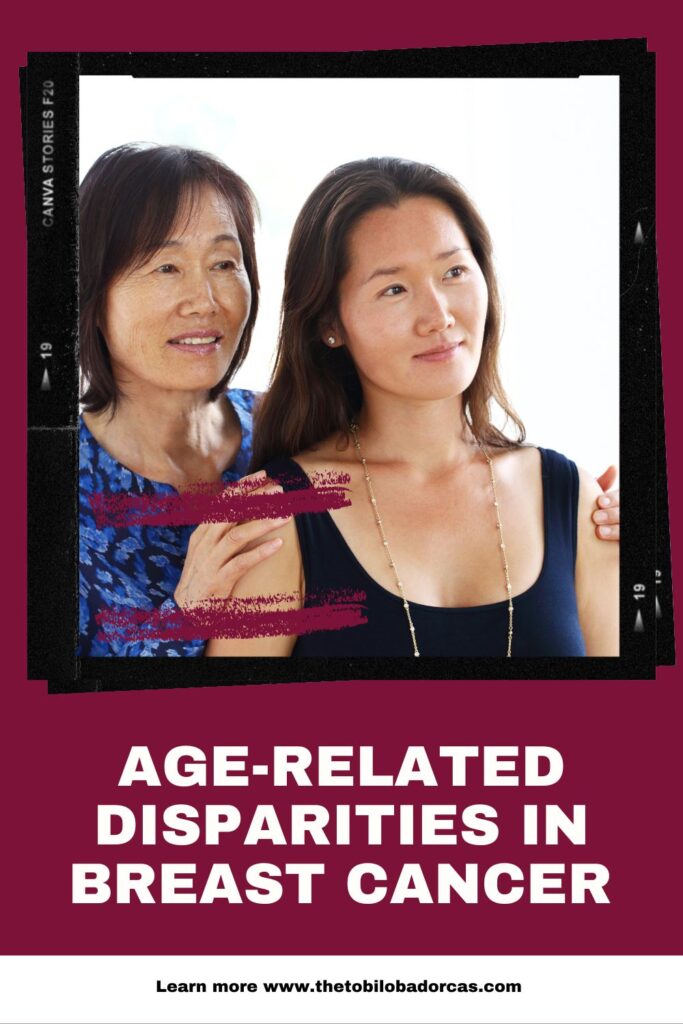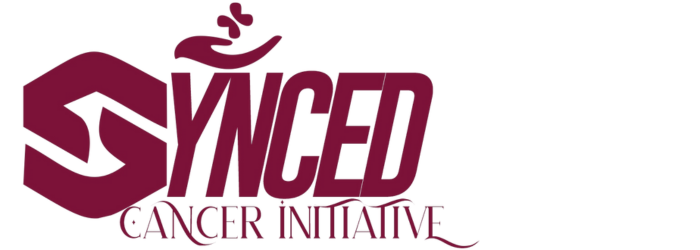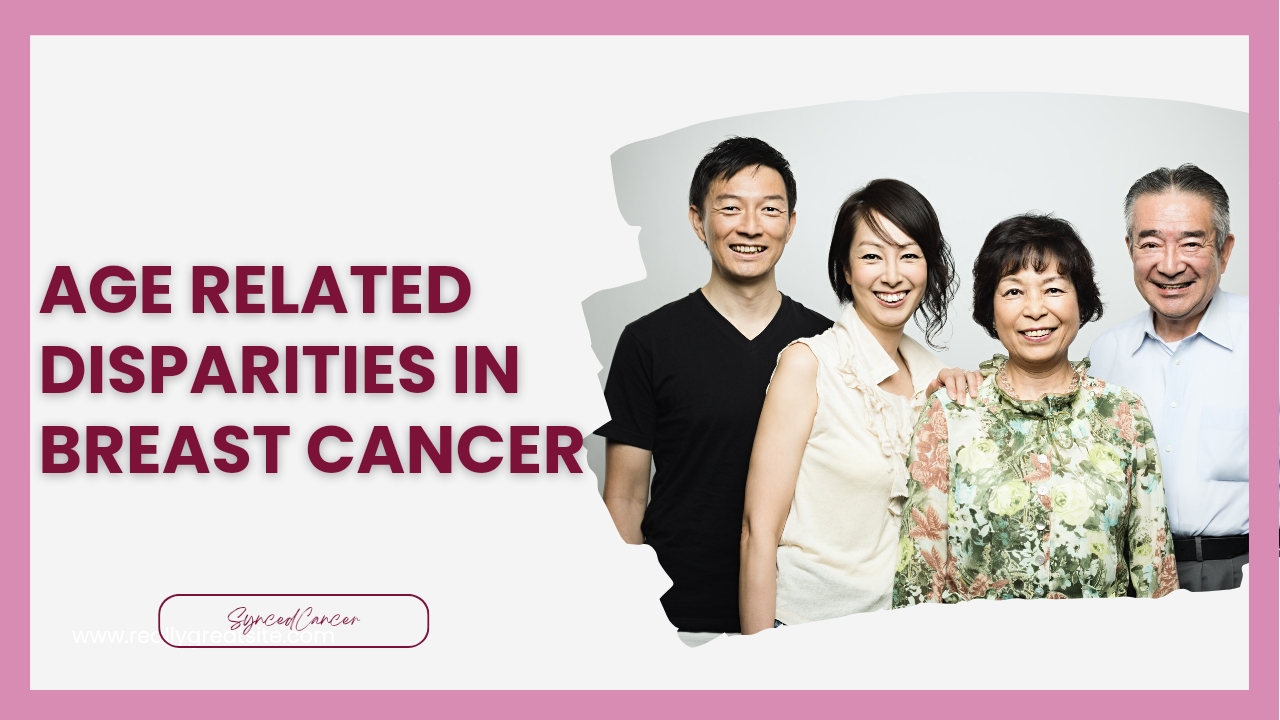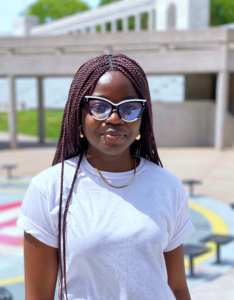Breast cancer is a significant global health issue, being the most common cancer among women worldwide. Despite advances in early detection, treatment, and overall survival, disparities in breast cancer outcomes remains, particularly when analyzed through the lens of age. Age-related disparities in breast cancer involve differences in incidence, presentation, biology, treatment, and outcomes between younger and older women. This blog post explores these disparities in breast cancer, discussing how age influences breast cancer risk, how the disease manifests across different age groups, and the implications for treatment and prognosis.
1. Incidence of Breast Cancer Across Different Age Groups
The incidence of breast cancer varies significantly with age. The risk of developing breast cancer increases with age, with most cases diagnosed in women aged 50 and older. According to the American Cancer Society, approximately two-thirds of invasive breast cancers are found in women 55 years of age and older. This trend is reflective of the cumulative exposure to risk factors over a woman’s lifetime, such as hormonal influences, reproductive history, and environmental factors.
However, while breast cancer is less common in younger women (those under 40), when it does occur, it tends to be more aggressive. Younger women diagnosed with breast cancer often face more challenging prognoses due to factors such as delayed diagnosis, more aggressive tumor biology, and fewer screening programs targeting this demographic.

2. Biological Differences in Breast Cancer by Age
Breast cancer is not a single disease but a collection of diseases with varying biological characteristics. These characteristics, including hormone receptor status, HER2 status, and gene expression profiles, can differ significantly between younger and older women, contributing to disparities in breast cancer outcomes.
- Tumor Biology in Younger Women: Younger women are more likely to be diagnosed with triple-negative breast cancer (TNBC) and HER2-positive breast cancer, both of which are more aggressive forms of the disease. Triple-negative breast cancer lacks estrogen receptors, progesterone receptors, and HER2 protein, making it unresponsive to some of the most effective breast cancer treatments like hormone therapy and HER2-targeted therapies. TNBC is associated with a higher likelihood of recurrence and a lower overall survival rate.
- Tumor Biology in Older Women: Older women, on the other hand, are more likely to develop hormone receptor-positive (ER+/PR+) breast cancer. These tumors are typically less aggressive and respond well to hormone therapies, leading to better overall outcomes. However, the presence of comorbidities and the potential for frailty in older women can complicate treatment decisions and outcomes.
3. Age and Breast Cancer Screening
Screening for breast cancer, primarily through mammography, is a crucial tool in early detection. However, the effectiveness and recommendations for screening vary by age, contributing to disparities in breast cancer.
- Younger Women and Screening: Routine screening mammography is generally recommended starting at age 40 or 50, depending on guidelines, but not typically for women under 40 unless they are at high risk (e.g., those with a strong family history or known genetic mutations like BRCA1/2). As a result, breast cancer in younger women is often diagnosed at a later stage when symptoms develop, leading to poorer outcomes. The denser breast tissue in younger women also makes mammograms less effective, further complicating early detection.
- Older Women and Screening: For older women, particularly those over 75, the benefits of continued screening are debated. Some guidelines recommend individualized decisions based on life expectancy and overall health rather than age alone. However, there is a risk of both overdiagnosis and overtreatment in older women, particularly in those with limited life expectancy, where the harms of treatment may outweigh the benefits.
4. Treatment Disparities by Age
Treatment for breast cancer typically involves a combination of surgery, radiation, chemotherapy, hormone therapy, and targeted therapy. However, treatment approaches can differ significantly by age due to factors such as tumor biology, comorbidities, and patient preferences.
- Treatment in Younger Women: Younger women are more likely to receive aggressive treatment, including chemotherapy and surgery (e.g., mastectomy). This is due to the higher likelihood of aggressive tumor biology and the desire to reduce the risk of recurrence. Younger women also face unique concerns, such as fertility preservation and the impact of treatment on family planning and career.
- Treatment in Older Women: In older women, treatment decisions are often more complex due to the presence of comorbidities, potential frailty, and concerns about the side effects of aggressive treatment. Older women may be less likely to receive standard-of-care treatments like chemotherapy, potentially due to concerns about tolerability and quality of life. However, under-treatment can lead to poorer outcomes, highlighting the need for careful, individualized treatment planning.
5. Prognosis and Survival Disparities
Age is a significant factor in breast cancer prognosis and survival. Younger women often have a worse prognosis due to more aggressive tumor biology and later stage at diagnosis. However, they may benefit from more aggressive treatments and have a longer life expectancy after treatment, assuming they survive the initial cancer.
Older women, despite typically having less aggressive disease, may experience poorer outcomes due to under-treatment, comorbidities, and the potential for recurrence. The overall survival rate decreases with age, not necessarily because of the cancer itself but due to the higher likelihood of death from other causes.
6. Psychosocial Impacts and Quality of Life
The psychosocial impacts of breast cancer also vary by age. Younger women often face significant emotional and psychological challenges, including concerns about body image, sexuality, fertility, and the impact on young children or family life. They may also experience more significant career disruption and financial stress.
Older women may face different challenges, such as dealing with multiple health issues, coping with the loss of independence, and concerns about the burden of care on family members. The quality of life after treatment can be significantly affected by the side effects of treatment, comorbidities, and the social support available.
7. Addressing Age-Related Disparities in Breast Cancer
To address age-related disparities in breast cancer, a multifaceted approach is needed:
- Tailored Screening Programs: Screening guidelines should consider individual risk factors rather than relying solely on age. This includes more personalized screening strategies for younger women at high risk and a balanced approach for older women based on their health status and life expectancy.
- Improved Access to Care: Ensuring that all women, regardless of age, have access to high-quality care is crucial. This includes access to genetic counseling and testing, fertility preservation services for younger women, and geriatric oncology services for older women.
- Research and Clinical Trials: There is a need for more research focused on the unique challenges faced by both younger and older women with breast cancer. Clinical trials should include a diverse age range to ensure that findings are applicable to all women.
- Supportive Care and Survivorship: Addressing the psychosocial and quality-of-life issues faced by women of different ages is essential. This includes providing age-appropriate support services, such as fertility counseling for younger women and comprehensive geriatric assessments for older women.
Conclusion
Age-related disparities in breast cancer are a complex and multifaceted issue that requires ongoing attention from healthcare providers, researchers, and policymakers. By understanding and addressing these disparities in breast cancer, we can improve outcomes for women of all ages, ensuring that every woman diagnosed with breast cancer receives the care and support she needs, regardless of her age. The goal should be to move towards a more personalized approach to breast cancer care, where age is one of many factors considered in the delivery of optimal treatment and support.










What do you think?
It is nice to know your opinion. Leave a comment.